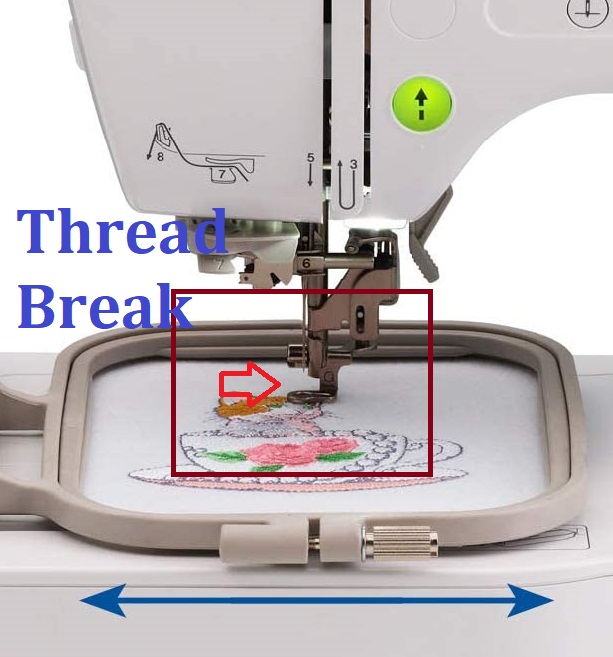It’s difficult to keep a thread from breaking when sewing/embroidering. It can happen with any project, no matter how much care is put into the preparation of the fabric and the work on your machine. But there are ways you can avoid this frustrating occurrence in the future! In this post, we’ll talk about how different threads behave differently and what you can do to help reduce your chances of breakage next time around.

So what causes thread breaks?
The most common cause of breaking threads is when the needle catches on the fabric. A change in direction at a corner or a seam can catch the thread, causing it to break. This usually happens when you’re making a turn at an angle or changing stitches. It’s important to keep the fabric smooth so that it doesn’t catch your thread, but since you can’t always control all of the fabric you work with; there are other things you can do to help.
The type of thread you use is also a major factor when it comes to thread breaks. Different manufacturers make threads that handle pressure or stretching differently, and some just aren’t meant for the kind of work being done. Polyester threads are strong but more difficult to stretch over pins and around corners, making them great for embroidery but not so great for machine quilting. Cotton/polyester threads can be softer than 100% cotton, which can help prevent the thread from catching on fabric as much.
The next time your thread breaks, look at the type you’re using and consider which threads are best for your machine and fabric.
Fixing a Thread Break
Once you’ve had a break, there are several ways to repair it without stopping your work and starting over. The problem is that once you have a broken thread, another one will probably break soon. A technique used by some embroiderers is to unravel the entire run with multiple needles where they broke in an effort to control any further breaks. That method can cause more problems than it solves, but there are other ways to cut threads without damaging your garment.
One of the most important things you can do is inspect your stitches. If you see any loose or broken threads, cut them right away. This will leave you with one less thread to worry about!
When working on a new project, try to add some extra fabric so that there are pins at the end of every stitch. This will help keep your thread from breaking and will reduce the damage if it does show up again.
If you can, try to avoid having two sides of the fabric at an angle with each other. You can avoid this by using an embroidery bar on your machine and sewing around it instead of through.
Chances are that thread breakage will reduce, and it’s important to be prepared so you don’t lose any more valuable time.
Special Tips to avoid thread breakage:
1. Thread breakage is often caused by tension
2. Make sure your thread isn’t too tight or too loose
3. Your needle may be dull and need to be changed, so try a new needle size
4. If you’re still having trouble with thread breakage, it’s possible the bobbin case needs to be replaced
5. Check for any lint in the machine that might cause problems – if there’s a lot of lint then you’ll need to clean more often.
Conclusion:
I hope that this article has helped you better understand the embroidery thread-breaking reason, tips, and fixation. If not, please feel free to reach out for more information or clarification on any of these topics. Thank you again for visiting our blog today!
You May read another article: